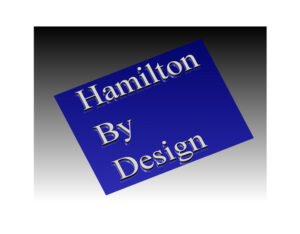Over the past 20 years, 3D CAD (Computer-Aided Design) modeling has undergone remarkable advancements, revolutionizing the way engineering designers and manufacturers conceptualize, design, and produce products. From its inception to the present day, 3D CAD has continually evolved, incorporating new technologies and functionalities that enhance its capabilities and drive innovation in various industries.
At the turn of the millennium, 3D CAD software was primarily used for creating static digital representations of mechanical parts and assemblies. These early systems provided rudimentary tools for creating geometric shapes and applying basic constraints and dimensions. While groundbreaking at the time, their capabilities were limited compared to the sophisticated features available today.
The past two decades have witnessed a proliferation of 3D CAD software packages, each offering increasingly powerful tools and functionalities. One significant development has been the integration of parametric modeling, allowing designers to create intelligent, feature-based models that can be easily modified and updated throughout the design process. This shift from traditional, static modeling to parametric modeling has vastly improved design flexibility and productivity.
Moreover, advancements in rendering and visualization technology have enabled designers to create highly realistic virtual prototypes, facilitating better communication and collaboration among stakeholders. This has reduced the need for physical prototypes, saving time and costs in the product development lifecycle.
Another key development in 3D CAD modeling is the emergence of cloud-based solutions, which offer greater accessibility and collaboration capabilities. Cloud-based CAD platforms allow multiple users to work on the same project simultaneously, regardless of their location, fostering real-time collaboration and streamlining the design process.
3D CAD modeling has played a crucial role in transforming the way engineering designers and manufacturers operate historically. By providing a digital representation of products before they are physically manufactured, 3D CAD enables designers to identify and rectify design flaws early in the development process, reducing the likelihood of costly errors and iterations during production.
Furthermore, 3D CAD modeling facilitates the optimization of product designs for performance, manufacturability, and cost-effectiveness. Engineers can simulate and analyze various design scenarios, such as structural integrity, thermal behavior, and fluid dynamics, to ensure that products meet the desired specifications and regulatory requirements.
Manufacturers also benefit from 3D CAD modeling by leveraging digital models to streamline manufacturing processes, improve workflow efficiency, and minimize waste. CNC machining, 3D printing, and other advanced manufacturing techniques are often directly integrated with 3D CAD systems, enabling seamless transition from design to production.
Looking ahead, the direction of 3D CAD modeling is likely to be shaped by emerging technologies such as artificial intelligence, generative design, and virtual reality. These technologies have the potential to further automate and optimize the design process, enabling engineers to explore a broader range of design possibilities and accelerate innovation. Additionally, with the growing emphasis on sustainability and circular economy principles, 3D CAD modeling may increasingly focus on eco-friendly design practices and materials selection to minimize environmental impact throughout the product lifecycle.
In conclusion, 3D CAD modeling has evolved significantly over the past 20 years, empowering engineering designers and manufacturers with powerful tools and capabilities to drive innovation and efficiency. As technology continues to advance, the future of 3D CAD modeling holds promise for even greater integration, collaboration, and sustainability in product development and manufacturing processes.
At Hamilton By Design, we utilize the latest in 3D CAD Modelling tools if you’re looking to get your project 3D Modelled, talk to Hamilton By Design Today – Contact Us

Mechanical Engineering | Structural Engineering
Mechanical Drafting | Structural Drafting
3D CAD Modelling | 3D Scanning

